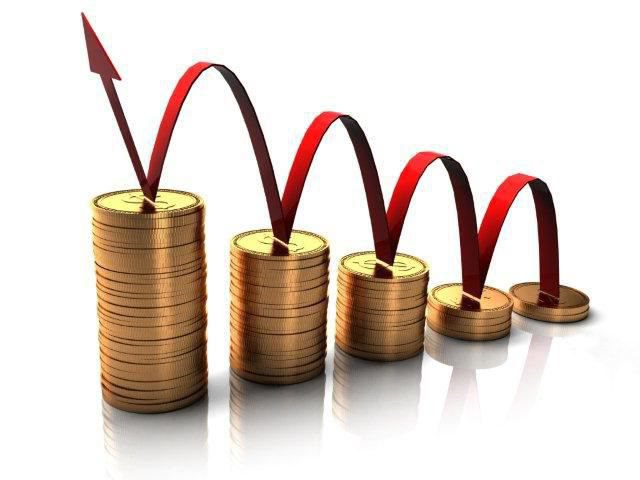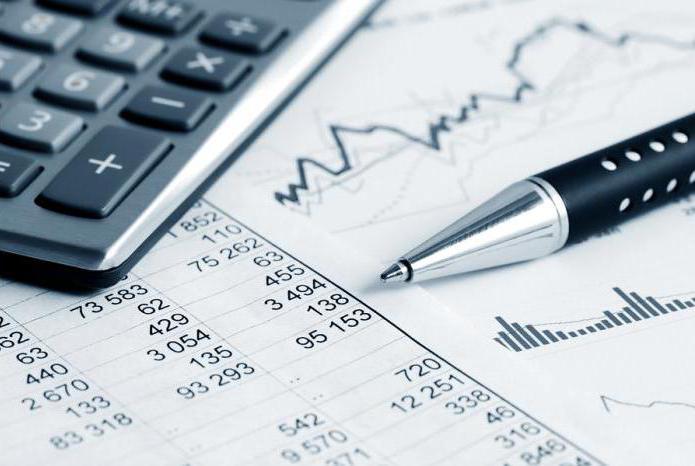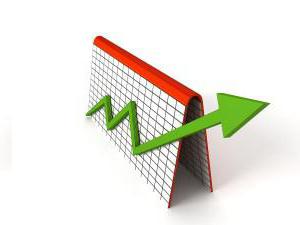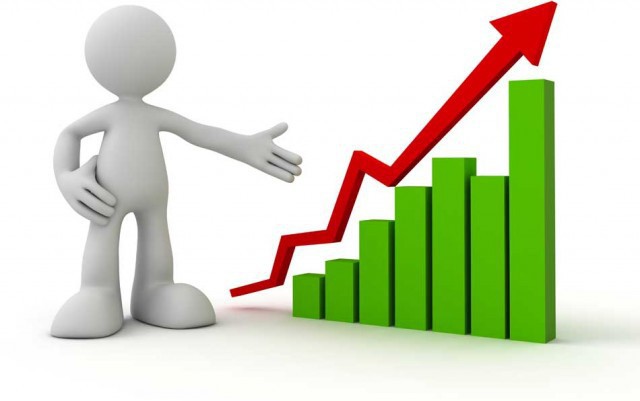Profitability is a parameter that many investors consider to be the key in making decisions about investing money in a particular project. Many current and potential entrepreneurs also hold the same position. A particular business area is often considered for the prospect of carrying out commercial activities in it, primarily based on the expected results on profitability. The corresponding indicator may, however, correlate with a wide variety of components of a firm's business model. Among these are fixed assets. What are the specifics of calculating profitability in relation to those? What can be the usefulness of determining its indicators in terms of business development?

Profitability
Before talking about what is profitability fixed assets, we study the definition of the corresponding term in a broader interpretation. What are the common theses of researchers regarding the concept under consideration? Profitability is most often understood as the level of excess of income over the expenses of the enterprise, which is expressed as a percentage. As a rule - in annual terms. In the event that the second component is larger than the first, profitability is assessed as negative.
The term in question may be similar, for example, to bank interest. A depositor, giving a financial institution a certain amount of money as a deposit, after a while, for example, after a year, comes and takes it with interest. In turn, an entrepreneur, having invested in a certain business, after a certain time has the right to expect a return on his investment, as well as additional interest from above, which will determine profitability.

In some cases, the term in question is directly related to the concept of profitability. However, their identification is not always correct. Profitability is relative indicator profitability is absolute. An enterprise with a revenue of 20 million rubles and a profitability of 10% will be more profitable than a company with a revenue of 1 million rubles and a profitability of 70%. However, the corresponding concepts are adjacent. So, if there is no profitability, then there is no profitability. It is important when building business plans, however, correctly distinguish between these concepts and set the necessary priorities.
Definition of fixed assets
There is another term, the essence of which is useful to study before exploring the specifics of such an indicator as the profitability of fixed assets. What approaches to its interpretation are common among researchers? Under fixed assets, economists most often understand the assets of the company, which are represented by real resources involved as a tool in production. It can be equipment of factory lines, machine tools, computers. Fixed assets must have a relatively long service life - at least one tax year. The key criteria for classifying a resource as fixed assets can be presented in the following list: the product is used in the production process regularly, compensated in correlation with production cycles, retains functionality and form throughout its service life, and is mainly used by hired employees of the company.

A variety of profitability indicators can be involved in a business. Let's consider them in more detail.This will be useful for determining the specific role played by the profitability of fixed assets: on the one hand, this is an independent indicator, and on the other, an element of a comprehensive assessment of the quality of a business model.
Profitability indicators
First of all, we should highlight such an indicator as return on sales. It reflects the amount of profit that falls on the earned unit of a particular currency. To calculate this ratio, it is necessary to divide the net profit by the revenue for the products sold. Indicators in both cases should be taken for the same time period.
The next significant indicator is return on assets. In order to calculate it, it is necessary to divide the total amount of profit for a specific period by the average value of the assets held by the company. This indicator allows, first of all, to assess the effectiveness of investing in a business, as well as the quality of enterprise management.
The next important indicator is the return on equity of the company. It is determined by dividing the net annual profit of the company by the average value reflecting the amount of capital of the company. It is usually reflected in percent. The considered parameter is used to compare the effectiveness of business activities of two companies operating in different industries. A similar need may arise if both firms have one owner and he wants to evaluate the effectiveness of their investments in a particular segment. Sometimes this parameter is used to assess the prospects of lending to a business.
The specificity of the profitability of fixed assets
Now we can study such a parameter as the profitability of fixed assets. Many economists consider it to be one of the most universal in terms of evaluating the effectiveness of the business model of a company in the manufacturing part. The profitability of fixed assets shows what is the dynamics of the return on investment in relevant resources - in the form of profit attributable to a single monetary unit, which reflects the value of assets.
The significance of the indicator in question is explained by experts in that it allows you to analyze not only the actual economic efficiency of investing in production, but also the quality of work of specialists using the appropriate equipment, makes it possible to detect problematic business processes that require optimization.
The calculation of the profitability of fixed assets
How can I calculate the profitability of fixed assets? As is the case with its other varieties, the determination of the actual values of the indicator in question will be based on the use of indicators reflecting the total profit in the corresponding “formula”. In this case, this indicator should be used in conjunction with the cost of acquiring fixed assets. At the same time, experts recommend calculating its average value. Which is quite logical - the value of funds may change during the tax year. The indicators obtained in the course of appropriate calculations can reflect how much profit can bring each component of the production infrastructure located in the structure of fixed assets.

What algorithms are used to calculate the profitability of fixed assets? The formula is as follows: the amount of net profit is taken and divided by the value of the respective funds. The resulting result is multiplied by 100%. Involved to determine such an indicator as the profitability of fixed assets, the formula is very simple, but it allows you to determine a figure that is extremely significant in terms of evaluating the effectiveness of a company's business model.The main purpose of the calculations in question is to determine the percentage of profit that correlates with the monetary unit of funds invested in fixed assets.
The practical value of determining profitability
The profitability of fixed assets and the accompanying indicators of the effectiveness of the business model are significant not only in terms of optimizing business management. Corresponding indicators can become an important factor in the success of communications between enterprise management and external players - investors, banks, customers, and the state. A company that shows high profitability of fixed and circulating assets has more chances to attract third-party financing, to participate in large-scale national and international projects as a partner of the state.

The same can be said about the prospects for obtaining profitable loans. Profitability - in all its variants - can be considered by banks as a leading criterion in assessing the solvency of a corporate borrower.
The specifics of the analysis of profitability of fixed assets
In some cases, enterprises can be carried out an analysis of the profitability of fixed assets. Such events may be organized with the aim of:
- determination of the most and least efficient production sites;
- assessment of the quality of the work of employees;
- identifying factors that determine the increase in profitability of production as a whole or in specific areas.
The analysis of profitability indicators of fixed assets, as a rule, is carried out in correlation with the study of other marked indicators.
Another important criterion - an indicator of the profitability of fixed assets should be considered in dynamics. It is possible that the introduction of new types of equipment into the production structure will have the most positive effect on the efficiency of the business model, but the company’s management should fix the moment that will testify to this. One way to do this may be to calculate the profitability of fixed assets in the dynamics.

Note that it is very important in this case to correctly interpret the corresponding dynamic indicators. The structure of production, the specifics of products may change over time. So, a factory line for the production of winter clothes may be the main workshop at the beginning of the year, and at the end of the year - one of the secondary products in terms of output, while the goods that have already been put on the market are being bought up. Profitability ratios in the first case may be significantly lower - however, from the point of view of the business model, this may not be critical due to large sales volumes and high profit levels for business owners. However, if the corresponding indicator decreases with the remaining production volumes, such an indicator may indicate problems in the business model of the company.
Profitability as an indicator of the effectiveness of a business model
The profitability of the use of fixed assets and its analysis in combination with the study of other indicators can show whether the enterprise, in fact, needs to improve the production base, or whether the efficiency of the business model is reduced due to difficulties in sales. However, it is possible that these problems will be interrelated. So, outdated technology for the production of winter clothing can predetermine the forced formation of high selling prices, through which the company will compensate for the costs. As a result of this, sales may decrease due to the fact that buyers will not be ready to purchase things at set prices or will be able to buy cheaper from competitors.
The increase in the profitability of fixed assets, fixed as a steady trend, may indicate that the technological processes at the enterprise correspond to current demands from the market.The use of new solutions on the factory lines can predetermine cost reduction, as a result - the formation of low prices and the subsequent increase in consumer demand for the company's products, which can provide either a sufficiently high profitability of the business as a whole or the desired profitability of the company.
Profitability as an indicator of investment quality
The profitability of fixed assets characterizes the company not only in terms of the efficiency of production lines and sales dynamics. This indicator can be significant also in the aspect of assessing the quality of distribution of investment capital for one or another business structural unit.

A situation is possible in which the organization’s management will spend a large amount of money on updating fixed assets, after which the owners will want to evaluate the profitability indicators of the respective resources for different periods. If they differ in the direction of reduction, and moreover, it is clearly not proportional to the ratio of prices for old and new equipment, then it may be useful for the heads of the company to reconsider their strategy of investing in appropriate production resources. An exception, however, may be the situation in which the net profit of the company grows, despite the decrease in the profitability of fixed assets.
Is a company always preferable to a large profitability?
Is it possible to say that the large value of the indicator in question uniquely characterizes the business on the positive side? This is generally the case. A large profitability ratio of fixed assets indicates, on the one hand, the low costs of the company, and on the other - the sufficient rate of sales. Both that and another can be predetermined by the manufacturability of the production process, the provision of which largely depends on the literacy of the investment of the company management in these or those decisions.
At the same time, too high profitability of the business, including in terms of measuring the corresponding indicator for fixed assets, can also speak of the unrealized potential of the company in terms of market expansion, low competition in a particular segment of economic activity, and also that the company may save on significant items of expenditure - for example, social.
In turn, the low profitability of fixed assets shows, on the one hand, that management does not invest too effectively in modernizing production, and on the other, that the company may operate in a segment where there is sufficiently intense competition, in which it is difficult to make production specific goods fundamentally more dynamic, and also reduce production costs. The corresponding parameter is useful to correlate, as we noted above, with profitability. High turnover of firms with less profitability in their pure form can generate more capital than smaller ones, but accompanied by high rates of the corresponding type. A similar pattern may also be characteristic of the correlation between the profitability and profitability of fixed assets. If the owner of the company is satisfied with the net capital extracted in the form of dividends, then the profitability factor may be secondary to him.
